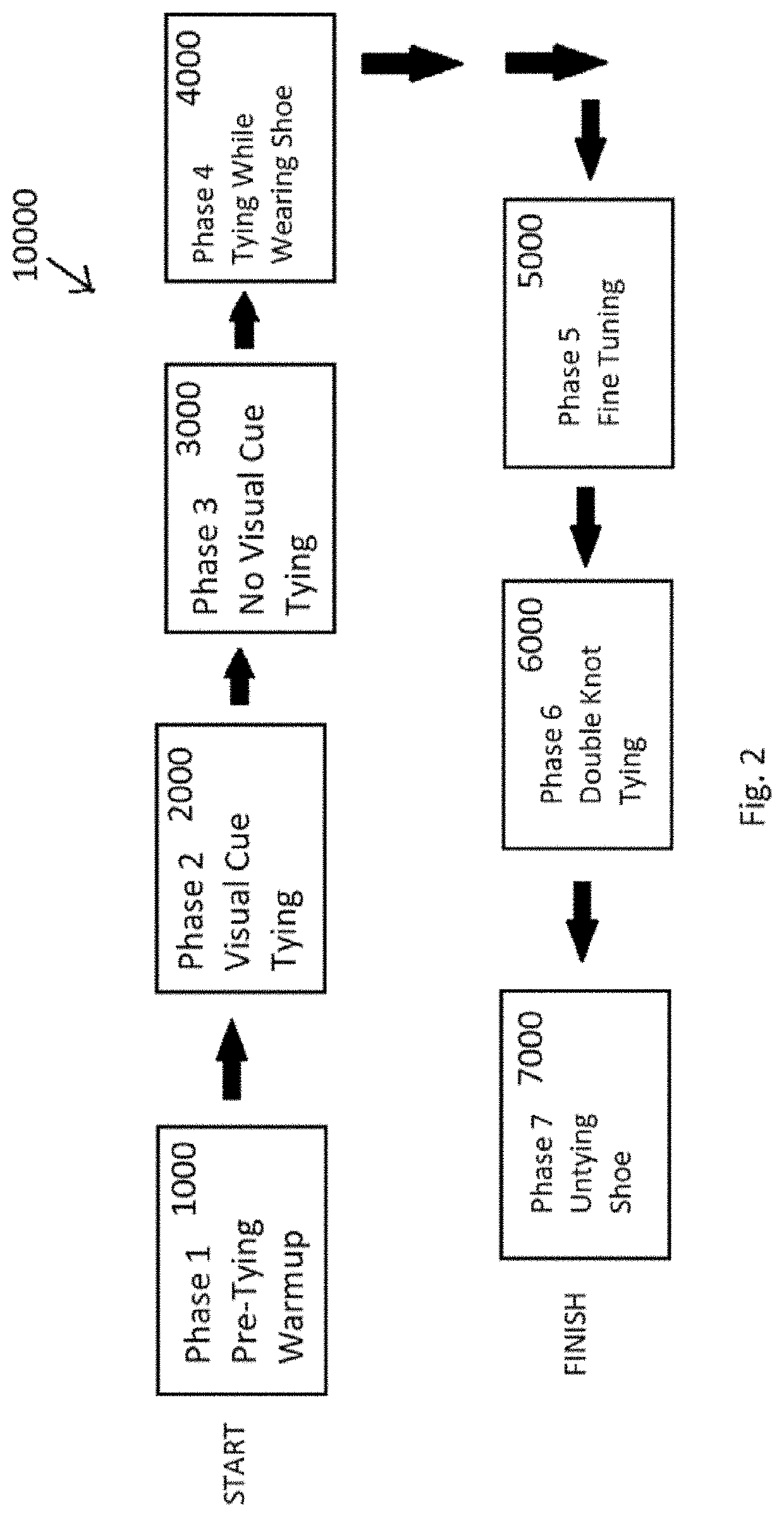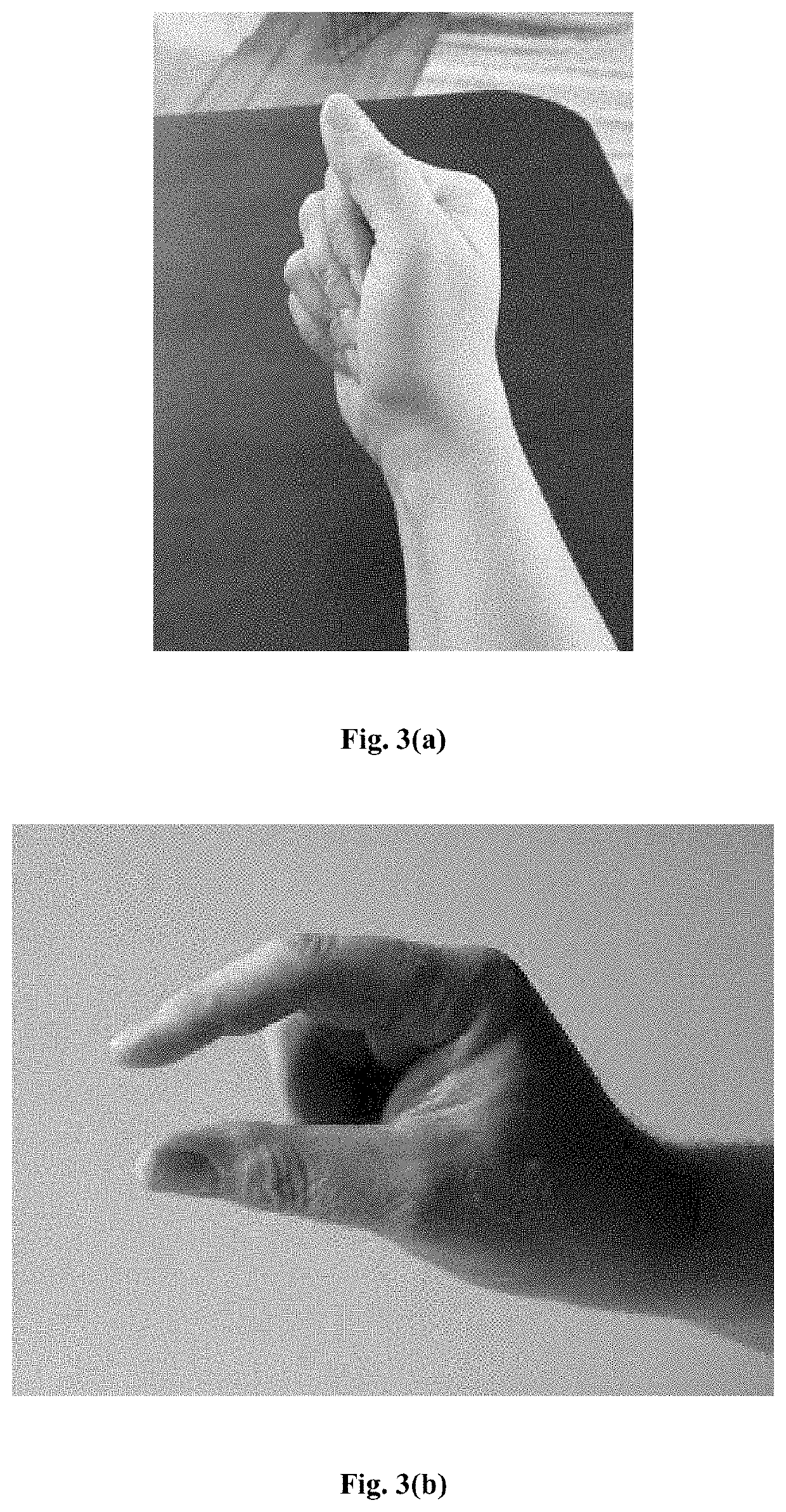Shoe Tying Teaching Aid Device and Method
a technology of teaching aids and shoes, which is applied in the direction of fastenings, instruments, apparel, etc., can solve the problems of many parents of special needs children on the autism spectrum who have encountered difficulty in teaching their children how to tie shoes, and achieve the effect of being effective and novel
- Summary
- Abstract
- Description
- Claims
- Application Information
AI Technical Summary
Benefits of technology
Problems solved by technology
Method used
Image
Examples
Embodiment Construction
[0018]Referring first to FIG. 1, a shoelace 100 is shown having six different colored regions 10, 20, 30, 40, 50 and 60. It is preferred that the shoe lace length of the shoelace 100 is approximately 54 centimeters in length and lengths shorter than this typically be very challenging when teaching this shoe tying method. It is obvious to one skilled in the art of making shoelaces that other colors can be substituted to provide additional colored design shoelace teaching aids. In the preferred embodiment, shoelace 100 uses a red colored region 10 and an adjacent white colored region 30. Adjacent to the white colored region 30 is a purple colored region 50, and the remaining length of the shoelace up to the first aglet is the primary color used for the shoelace which is a white color in the preferred embodiment. On the opposite side and of the same length as the red colored region 10 is a blue colored region 20. Adjacent to the blue colored region 20 and having a length of approximate...
PUM
 Login to View More
Login to View More Abstract
Description
Claims
Application Information
 Login to View More
Login to View More - R&D
- Intellectual Property
- Life Sciences
- Materials
- Tech Scout
- Unparalleled Data Quality
- Higher Quality Content
- 60% Fewer Hallucinations
Browse by: Latest US Patents, China's latest patents, Technical Efficacy Thesaurus, Application Domain, Technology Topic, Popular Technical Reports.
© 2025 PatSnap. All rights reserved.Legal|Privacy policy|Modern Slavery Act Transparency Statement|Sitemap|About US| Contact US: help@patsnap.com



